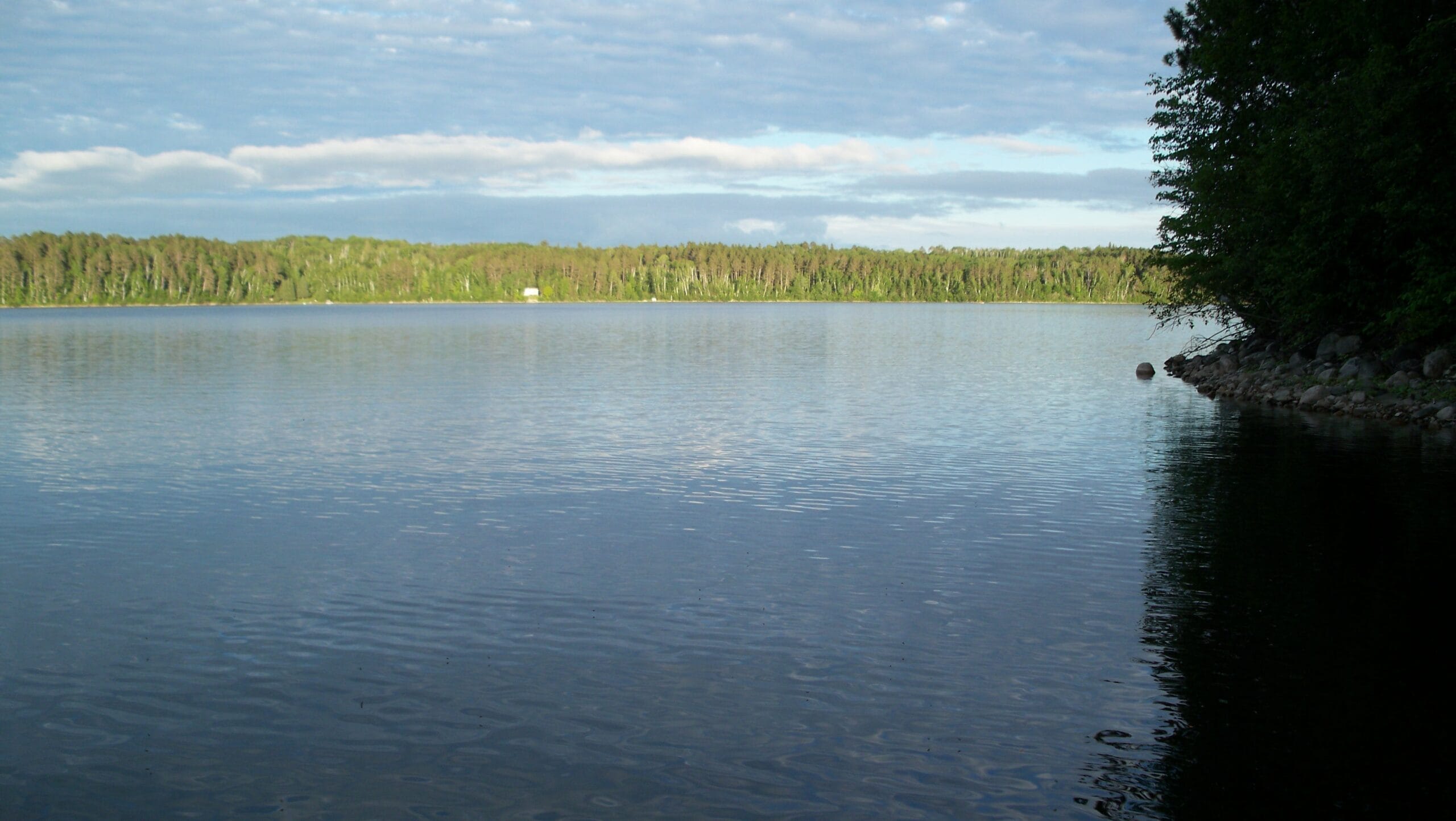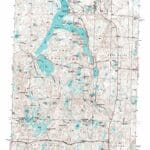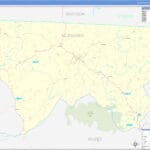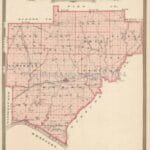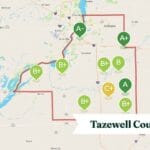This guide unlocks the power of Itasca County’s Geographic Information System (GIS), a treasure trove of public data and mapping tools. Whether you’re a homeowner, researcher, government employee, or simply curious about the area, this guide will equip you to navigate and utilize these powerful resources. We’ll explore the Itasca County GIS website, the Minnesota Geospatial Commons, and the County’s Surveying & Mapping department, providing you with the keys to discover Itasca County like never before. [https://www.lolaapp.com/itasca-county-gis]
Exploring Itasca County’s Geospatial Landscape
Itasca County’s GIS offers a wealth of information, from property lines and zoning to the intricate network of lakes and forests. This guide will empower you to access and utilize these powerful mapping resources.
Getting Started with Itasca County GIS Data
Your journey begins with the Itasca County website (co.itasca.mn.us), your home base for accessing interactive maps. Explore trails, plat books, and more. You’ll also find a direct link to the county’s ArcGIS Web Application, a robust platform for in-depth exploration and analysis. For quick property information, the Interactive Corner Card Viewer is readily available.
Expand your search with the Minnesota Geospatial Commons, offering a vast collection of downloadable GIS data layers. Find essential Itasca County data, like tax parcel boundaries and zoning designations. For detailed property insights (tax classifications, valuations), the Itasca County Parcel Info System offers comprehensive records. Maphill (maphil.com) provides diverse perspectives with various map styles, from classic street maps to satellite and terrain views.
The Surveying & Mapping Department: Guardians of Geospatial Data
The Itasca County Surveying & Mapping Department (link to department page) ensures the accuracy and reliability of Itasca County’s GIS data. They maintain the integrity of Public Land Survey monuments, maps, and records, acting as custodians of the county’s spatial history, ensuring maps reflect on-the-ground reality. Contact them via the county website for any surveying or mapping questions.
Data Layers: Unveiling Itasca County’s Rich Tapestry
Itasca County’s GIS is a multi-layered map, each layer revealing a new dimension. This wealth of data provides a holistic view, waiting to be explored:
| Data Layer | Description | Potential Uses |
|---|---|---|
| Parcel Data | Property boundaries, ownership, assessed valuations | Property research, land value analysis |
| Tax Maps | Visual representation of property tax information | Tax distribution analysis, property tax comparisons |
| Zoning Information | Land use regulations and zoning designations | Development restriction analysis, project planning |
| Environmental Maps | Wetlands, forests, and other natural resources | Environmental impact assessments, conservation |
| Topographic Maps | Elevation data and land contours | Terrain analysis, infrastructure planning |
| Aerial Imagery | High-resolution aerial photographs | Land feature visualization, land use assessment |
Navigating the Tools: A Practical Guide
Ready to explore? Here’s how to get started:
Accessing the ArcGIS Web Application: Visit the Itasca County website and locate the link to “GIS,” “Mapping,” or “Interactive Maps.”
Downloading Data from the MN Geospatial Commons: Go to gisdata.mn.gov, search for “Itasca County,” and filter results by data type (e.g., “parcels,” “zoning”). Download the relevant datasets.
Using the Itasca County Parcel Info System: Navigate to parcelinfo.com and enter an address or parcel number to access detailed property records.
The Future of Itasca County GIS: A Glimpse Ahead
Itasca County’s GIS is constantly evolving. Technological advancements and improved data collection methods suggest even more detailed and accessible information in the future. This creates exciting possibilities. Could comparisons with neighboring counties reveal opportunities for improvement? Could the data inform future planning and development, enhancing decisions related to transportation and emergency management? The potential extends beyond map creation; it’s about harnessing location-based data to understand and manage the county’s resources and future.
Accessing Itasca County’s Comprehensive GIS Hub: Exploring Interactive Maps, Property Data, and Environmental Resources
Itasca County’s GIS Hub is a dynamic tool, a digital encyclopedia of the county’s geography, environment, and infrastructure. It offers valuable insights for everyone, from residents to researchers.
Understanding Itasca County’s GIS
The Itasca County GIS is a digital representation of the county. It combines various data layers to create a comprehensive picture, encompassing property boundaries, zoning information, environmental data (wetlands, forests), and infrastructure (roads, utilities). This data is constantly updated, ensuring relevance.
Accessing and Using the GIS Hub
Accessing this information is easy. The Itasca County website (co.itasca.mn.us) provides links to interactive map viewers and other resources. While much of the data is publicly accessible, some specialized datasets or advanced functionalities may have limited access, which is typical for such systems. Any associated costs will likely be outlined on the website.
Exploring Available Data Layers
The power of the Itasca County GIS lies in its diverse data. Overlay different layers of information, like piecing together a puzzle. View property lines alongside zoning regulations, wetlands intersecting with proposed development, or recreational trails through different ecosystems. The available data is constantly evolving with new research and changes in the environment. [https://www.lolaapp.com/itasca-county-mn-gis]
| Data Layer Category | Description | Potential Uses |
|---|---|---|
| Property Information | Parcel boundaries, ownership, taxes, assessed values | Real estate research, property development, tax assessment review |
| Zoning and Land Use | Zoning districts, land use designations, future land use plans | Urban planning, development proposals, community engagement |
| Environmental Resources | Wetlands, forests, water bodies, soil types | Conservation efforts, environmental impact assessments, ecological studies |
| Infrastructure | Roads, utilities, public facilities | Transportation planning, infrastructure management, emergency response |
| Elevation and Topography | Contours, elevation models, terrain analysis | Engineering projects, landscape design, environmental modeling |
Functionality and Tools
The Itasca County GIS offers interactive tools for analyzing spatial information, potentially including measurement tools, query tools, overlay analysis, data downloads, printing, and reporting capabilities. The specific tools and their sophistication may vary based on platform and access level. Ongoing research in user interface design and GIS functionalities suggests future systems may include more intuitive tools and advanced analytical features.
Support and Resources
The Itasca County (co.itasca.mn.us) website likely provides GIS department contact information or a designated help desk. You may find helpful resources. [https://www.lolaapp.com/iredell-county-nc-gis]
A Note on Data Accuracy
While informative, the interactive maps are not survey-grade accurate. They provide a visual representation but are not a substitute for official surveys. For precise boundary information or legal purposes, a professional land survey is essential.
Understanding Itasca County Surveying & Mapping: Your Guide to Land Records and GIS Resources
Itasca County’s Surveying & Mapping Department preserves land records and makes geographic information accessible. They’re guardians of the county’s spatial history.
Itasca County offers rich spatial data through its GIS resources. Digital maps and datasets provide property lines, zoning regulations, environmental features, infrastructure locations, and recreational area information. This data is valuable for everyone, from homeowners to researchers.
Accessing this information is easy. The Itasca County website (co.itasca.mn.us) likely serves as the main portal to mapping services and data downloads. You might find interactive maps or links to downloadable datasets. The Minnesota Geospatial Commons (gisdata.mn.gov) is a statewide repository of geographic data. For parcel-level data, platforms like Parcelinfo.com offer detailed information. CountyOffice.org may provide land records and deeds.
Understanding the Public Land Survey System (PLSS) is crucial. This system (townships, ranges, sections) is the foundation of land ownership descriptions. It’s the language of land ownership, allowing interpretation of historical records and connection to current maps and data.
| Resource | Likely Information Available | Potential Use Cases |
|---|---|---|
| Itasca County Website | Interactive maps, data downloads, general information | Property research, zoning inquiries, recreational planning |
| MN Geospatial Commons | Detailed datasets, aerial imagery | Advanced spatial analysis, environmental studies |
| Parcelinfo.com | Parcel-level data | Property appraisal, real estate due diligence |
| CountyOffice.org | Land records, deeds | Title searches, historical research |
This information is dynamic. Ongoing research and technological advancements continually expand GIS possibilities. New data layers, improved tools, and user-friendly interfaces constantly develop, increasing the potential of GIS for understanding Itasca County. This integrated approach makes Itasca County a leader in accessible and usable land data.
Unlocking Itasca County Property Insights with GIS: Parcel Information, Tax Data, and Zoning Maps
Itasca County’s GIS offers publicly available data for property insights. It’s your all-access pass to understanding the county’s landscape, from individual parcels to broader land use trends.
Exploring Itasca County Parcel Data
Imagine a detailed dossier on any property. Resources like Acres (acres.com) and the Minnesota Geospatial Commons (gisdata.mn.gov), combined with the Itasca County Parcel Info System (parcelinfo.com), offer comprehensive parcel records. This data goes beyond the surface.
Decoding Itasca County Tax Data
Access assessed market values and property tax data directly from the County Auditor, available through the Parcel Info System and the Minnesota Geospatial Commons. This information is valuable year-round for evaluating property values and comparing neighborhoods.
Visualizing Itasca County with Interactive GIS Maps
Itasca County’s ArcGIS Web Application (https://maps.co.itasca.mn.us/PublicApp) and resources like County Office (countyoffice.org) offer interactive mapping tools. Explore how zoning regulations intersect with property lines or visualize how environmental features might impact an area.
Zoning and Land Use Regulations
Zoning maps, often accessible through County Office, provide essential information about permitted land uses. This guidance is crucial for both seasoned developers and homeowners planning small projects.
Navigating the Nuances of GIS Data
While powerful, Itasca County’s GIS resources have limitations. Interactive maps are not survey-grade. They provide a visual representation, but for precise boundaries, a professional survey is essential. Data is constantly evolving, so always verify you’re using the most current data.
| Data Type | Description | Likely Sources |
|---|---|---|
| Parcel Data | Ownership, acreage, sales history | Acres, MN Geospatial Commons, Parcel Info System |
| Tax Data | Assessed values, property taxes | County Auditor, MN Geospatial Commons, Parcel Info System |
| Zoning Maps | Permitted land uses | County Office |
| Interactive Maps | Dynamic visualization and exploration of data layers | Itasca County ArcGIS Web Application, County Office |
This data is invaluable for various purposes. Experts suggest supplementing this information with other resources and professional advice when making critical decisions. As GIS evolves, we can anticipate more sophisticated tools and data, enhancing our understanding of Itasca County’s landscape.
- Revolution Space: Disruptive Ion Propulsion Transforming Satellites - April 24, 2025
- Race Through Space: Fun Family Game for Kids - April 24, 2025
- Unlocking the Universe: reading about stars 6th grade Guide - April 24, 2025
